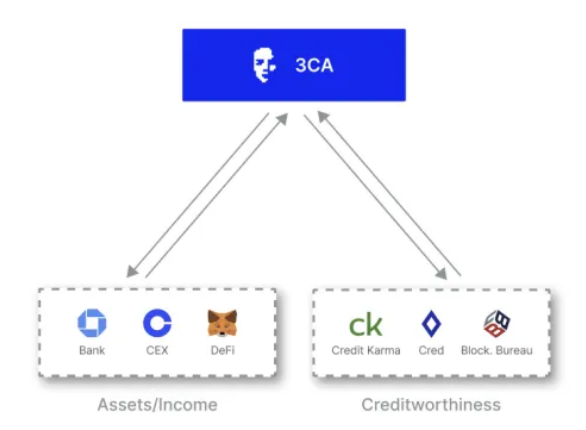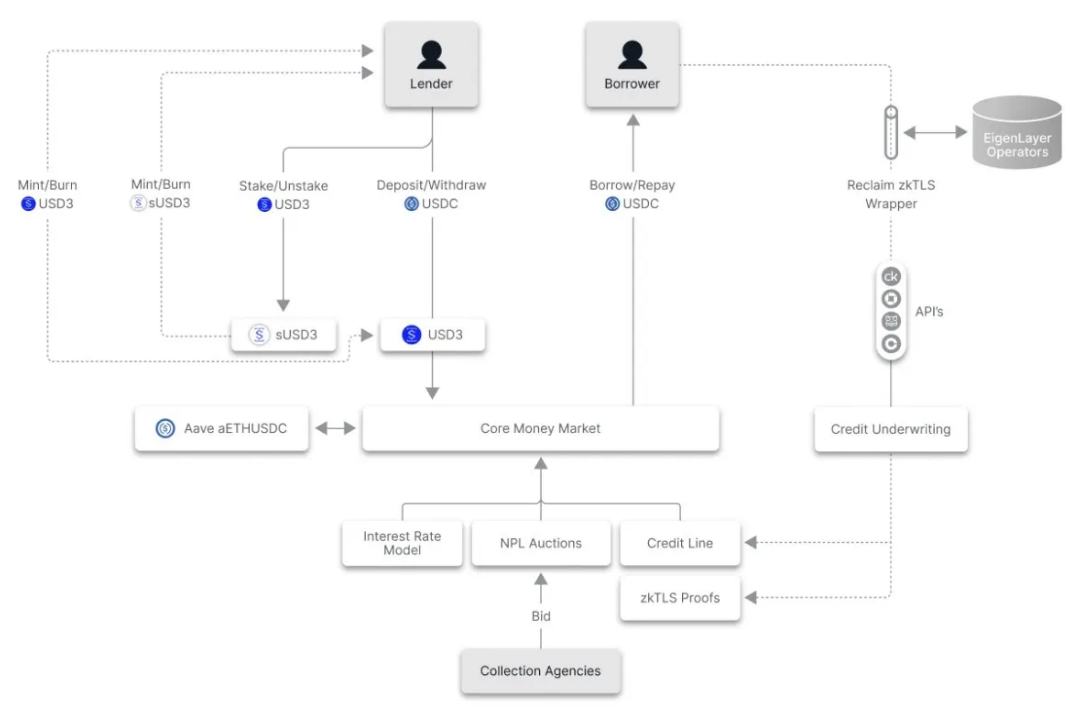Unsecured Lending Agreement 3 How does Jane change the on-chain market?

Reprinted from panewslab
03/13/2025·1MAuthor:Alea Research
Compiled by: Felix, PANews
The DeFi money market was once seen as an innovative force that subverted traditional finance. Although on-chain lending remains active, its penetration among ordinary users and institutions is far from early expectations.
The biggest obstacle to the development of DeFi lending may not be user experience, smart contract risks or other factors, but the inability to provide low- or unsecured lending. Whether it is the working class who applies for mortgage loans or corporate mergers and acquisitions, it is important to achieve excess loans.
Unsecured lending in the crypto space has always been seen as an "impossible triangle". . Without a way to get decentralized protocols to access certain information and provide coverage to users, it is difficult for users to prove their credit score or ability to repay loans.
3Jane combines the advantages of CeFi and DeFi and adopts a new approach to addressing the issue of unsecured lending. This article aims to review its published project white paper to discuss how unsecured lending can change the on-chain market.
Current status of unsecured loans
The traditional unsecured credit market is as large as $12 trillion, but it is almost zero in the DeFi sector – especially on the retail side. Although some protocols such as Maple Finance and Goldfinch use DeFi smart contracts to provide loans to institutions, the market is still small.
In terms of centralization in the crypto field, the lending market has not yet returned to its heyday in 2021. Major players such as Celsius and Genesis OTC provide unsecured lending to large players in the field. This trend stagnated in 2022 and has not recovered to this day. While it may be a good thing to ensure the relative stability and sustainability of this cycle, market gaps remain.
For mainstream assets and assets with large market capitalization, institutional loans are still a necessary factor in maximizing liquidity. However, if unsecured lending can be implemented, it may have a significant impact on the on-chain market. If solutions like 3Jane work as expected and get more widely used, this could be a major breakthrough in the DeFi lending market.
3Jane ' s background
3Jane bypasses the barriers that block unsecured loans by using existing infrastructure to deposit fiat into cryptocurrencies. Crypto user experience has improved significantly since the last cycle. One aspect of improvement is the convenience of deposit. Plaid provides users with API services that connect their bank accounts to fintech and other applications, including Robinhood.
Plaid is the way 3Jane initially connects off-chain credit data with on-chain Ethereum addresses. In terms of user privacy, the Jane3 protocol uses zkTLS for safe transmission of off-chain data.
Underwriting is not done on the chain, but rather it is passed to an off-chain algorithm. The algorithm is adjusted based on borrower's risk before providing the loan terms. Factors that affect credibility include the user's wallet balance and potential DeFi activity, bank balance and assumed income, and the relevant credit data associated with the bank account. Plaid itself does not withdraw credit history and is done by other providers.

After considering all these factors, you can issue a loan. It works by the lender depositing his own USDC to mint 3Jane’s native USD3 or sUSD3 and assumes the risk of certain credit lines. Since 3Jane's loans do not require collateral support at all, whether an effective repayment guarantee mechanism can be established becomes the key - if the borrower cannot ensure that the contract is fulfilled on time, the platform will face the systemic risk of lenders evacuation and liquidity depletion.

Unpaid debts on 3Jane are basically considered credit card debt or other types of unsecured debt; failure to repay can lead to a significant reduction in credit scores and threats of collection. In 3Jane's plan, the agreement auctions non-performing assets (debts) to U.S. debt collection agencies. These institutions will receive a portion of the debt collected, with the rest owned by the original lender.
Given the international nature of cryptocurrencies, it is not clear how strong the deterrent is to default, nor is it clear whether the lender will feel at ease with these measures. Still, this is an interesting solution, showing that on-chain actions have off-chain consequences, which are not common except for bankruptcy or exploitation.
3Jane claims to be a user base including individual traders and miners, businesses, and even AI agents. This means that this service is mainly suitable for heavy asset users. This may make lenders more assured that if these users cannot repay, they will also be more likely to collect debts.
Users can delete their personal data from the platform after repaying the loan, because storing this data on the platform is very important for collection when users cannot repay the loan. These data will be shared with specific collection agencies that bid for certain outstanding loans.
Overall, 3Jane represents a unique solution to the problem of unsecured lending. Even though in practice the project serves primarily an ultra-high net worth individual (UHNWIs) and even institutions model, no different from the centralized unsecured lending seen in the past, 3Jane provides an interesting case study that illustrates the possibility that cryptocurrencies provide lending solutions given advances in ZK-tech and Web2 integration.
Related Reading: Decode DeFi 2025: Top 10 Key Insights from Consumer Finance to Technological Innovation

